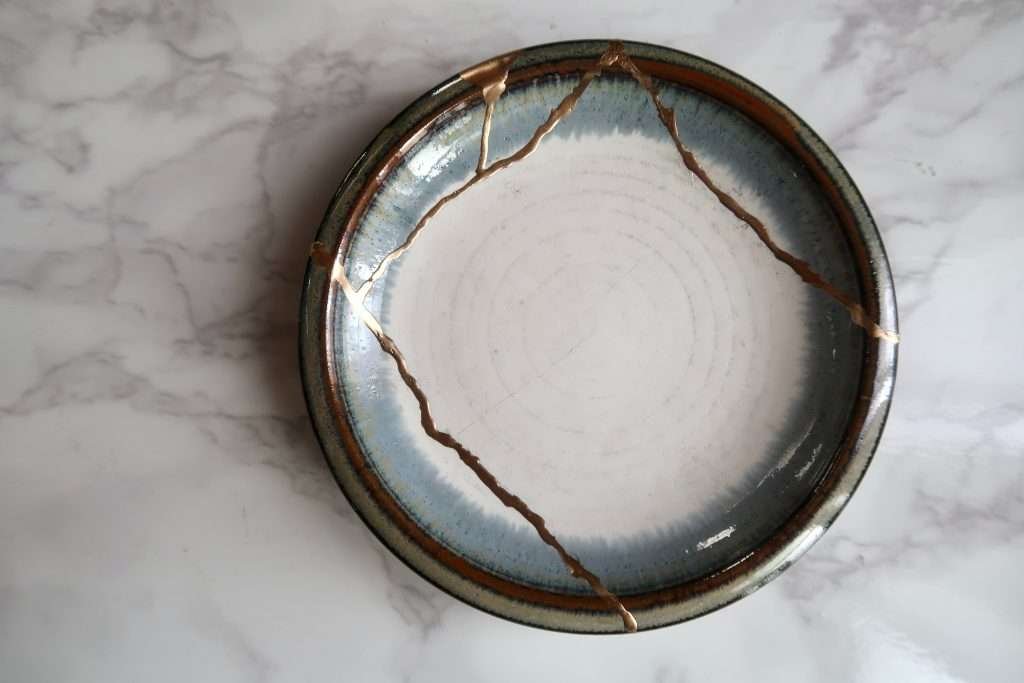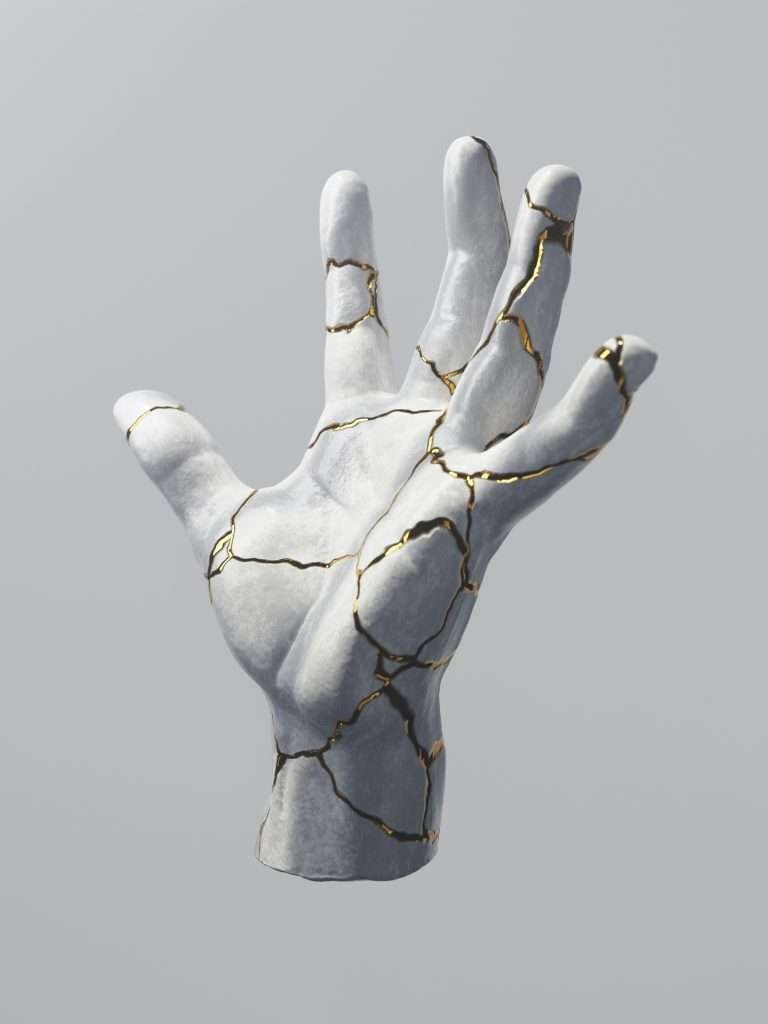One of my lead characters has a problem. I mean, he used to have a problem.
He was too perfect. He was a Mary Sue, the kind of leading man you instantly fall in love with. Yes, I wanted my readers to fall in love with him, but his superhuman perfection should have been a clue that he needed cracks and broken places to be repaired, scars to make him more beautiful and interesting.
Add depth to your fictional characters.
I went to work on my protagonist and gifted him with some emotional baggage. He became more relatable, and the story improved too. Add depth to your fictional characters using flaws and scars.
If your character is unmarred, he is a dead bore. What if your character has suffered from experiences that make him too cautious? What if he has reasons for self doubt or even self sabotage?
Now we’re talking! That’s the kind of lead character we can get behind and root for.
- Add depth to your fictional characters.
- Develop a kintsugi mindset.
- How do you apply kintsugi to your characters?
- Give your characters scars, either from the past or as your plot develops.
- Avoid Mary Sue Syndrome.
- Make sure there is something your main character cannot do.
- Give your character a flaw.
- Put the character's flaw at odds with their quest.
- Check it before you wreck it.
- Give your flawed character redeeming qualities.
- Avoid the too-perfect happy ending.
- Quick Character Assessment
- Resources:
Develop a kintsugi mindset.
New authors are especially prone to creating too-perfect characters, and I think this is because our western society worships perfection. We learn at an early age to hide our imperfections, to seem invulnerable, to look “good,” and to seem “nice.”
A frequent beginner author mistake is to feature a fantasy version of themselves as the lead character, imbued with virtue, beauty, and amazing abilities.
Kintsugi is a Japanese term which means “joining together with gold.” Contrary to the western aversion to cracked or broken ceramic dishes, bowls, and vessels, the eastern philosophy is to heal these objects with lacquer and gold. Yes, gold. Repairing broken ceramics is considered an art form.

After repair, the object is considered to be more beautiful than before. Veins of gold run across its surface, a recognition of its history and continued relevance. This is an example of wabi sabi, “flawed beauty.”
What if we challenged our view of broken people and people undergoing repair? What if we raised healing and repair to an art form and stopped pursuing physical and mental and emotional perfection?

What if we could view our scars and flaws as stripes of gold running across the human soul, as flawed beauty, and recognize them as hard-won life experience and acquired wisdom?
Develop a kintsugi mindset about flaws and scars to add depth to your fictional characters.
How do you apply kintsugi to your characters?
Examine your main characters for scars and flaws and make sure they have or acquire some of each.
Give your characters scars, either from the past or as your plot develops.
Eragon received a mark on his hand the moment he touched Saphira, his dragon companion when she hatched from her egg. The mark changed the course of his life. Later, his back was wounded in battle, and he suffered debilitating pain for a long time before he was healed.
Eragon was your typical orphaned character, destined for great things, whose uncle withheld crucial information about his heritage. (Is that you, Luke Skywalker?) Like I said—typical, at least for fantasy. That means Eragon had emotional scars before the story began.
No matter that Eragon is a trope among cliché tropes, the scars made him interesting enough for millions of readers to purchase the Inheritance Cycle series written by Chrstopher Paolini. (Worst movie adaptation ever; I hope Disney does better with their attempt.)

Avoid Mary Sue Syndrome.
Paula Smith is credited with coining the term “Mary Sue” for the archetype of a too-perfect female character. Smith wrote a parody in 1973, a short story, “A Trekkie’s Tale,” that riffed on the too-perfect female characters in the Star Trek TV series. Of course, a Mary Sue can be male or female.
The Mary Sue character often comes equipped with a wide range of skills that are crazy good, so she’s ready for anything from repairing her car with nothing but a bobby pin to arranging flowers for a formal dinner. (Weird.)
Make sure there is something your main character cannot do.
As long as you’re at it, make the thing they cannot do (at first) something critical to their success, so they must acquire a skill or recruit another character they dislike to help them beat the odds. Make things difficult for your heroine or hero. Supercharge your conflict.
Give your character a flaw.
A flaw is not the same as a scar; it is generally driven by the character’s character. Forgive the pun.
Perhaps it is a negative personality trait:
- She is gullible and falls for anything.
- He is quick to anger and carries resentment like a shield.
- She’s so privileged that she has no notion of the way others live.
- He would rather run a con than earn an honest living.
Another type of flaw is a mistaken belief or a deep-seated fear. Both of these traits provide scope for conflict and growth.
A flaw is not the same as a scar; it is generally driven by the character’s character. Forgive the pun.
Maybe your main character believes their flaw is actually a virtue—she is “plain spoken” (rude) or he is “rough and ready” (quick tempered). Think of Ebenezer Scrooge, the miserable miser who took pride in his extreme thriftiness and ability to make money on the backs of others’ misfortune; he was proud of these “virtues” in the beginning.
Put the character’s flaw at odds with their quest.
Privileged Pricilla, who thrives on performative charity, needs to be thrown off the deep end where she is confronted by her stunning ignorance about real life. Rough and Ready Ralph must rise to an occasion that requires finesse and diplomacy.
Check it before you wreck it.
Please, please don’t make your character too stupid to live. I’ve mentioned this problem before, but it bears repeating. If your character causes all the problems they face but somehow they survive or triumph or win out, I just cannot root for them.
It is fine for your lead character to be blind to their faults for a time, but sooner or later, they need to have that ah-hah moment that motivates them to change.
For more on the ah-hah moment, see Finding Your Mirror Moment | Writing Pursuits.
Give your flawed character redeeming qualities.
Maybe your tough guy has a soft spot for his dog or for the vulnerable waitress who serves him coffee at the diner every morning. Give your reader something to hope for.
Avoid the too-perfect happy ending.
If your character has no scars at the end, you’ve erased their triumph. You don’t need to go as far as wounding them past the point of healing like Frodo Baggins, but let your character wear their badges of honor; don’t erase their scars unless it serves the plot.
Your character may be sore from their brush with death at the end and carry wounds past the end of the book because real people experience lingering pain.
Remember, death must be on the line in your plot, and death can take many forms: emotional, spiritual, physical, social, financial, or political. For more on this topic, see: Fear and Desire, Keys to Conflict | Writing Pursuits.
Buy me a coffeeQuick Character Assessment
- Does your main character suffer from Mary Sue Syndrome? Are they too perfect?
- What is your character’s most ardent desire? Understanding what motivates your character may also give you the key to what is holding them back.
- Does your lead character have a scar or a flaw that is relevant to your plot, and will it create conflict?
- What do you envision as your character’s ah-hah moment, going from a reactive mode (or a stance of passive acceptance) to a proactive mode when they determine to make a change, no matter what.
- Does your character have a redeeming trait you can demonstrate near the story’s beginning, especially if they are generally unlikeable?
- Is there a skill your character needs but does not have? This isn’t necessarily a character flaw, but it is an excellent way to create conflict.
- Do you know your character’s backstory even if you never plan to share it?
- What is at stake for your character? Death of some kind must be on the line.
Circling back to kintsugi, piece your lead character back together with scars of gold. Create characters of flawed beauty that transcend perfection.
Reflect on your current work in progress or a recent story you’ve written. Take a moment to identify one area where you can deepen a character’s flaws or introduce a meaningful scar to enhance their journey. Share your insights or struggles with us in the comments below!

